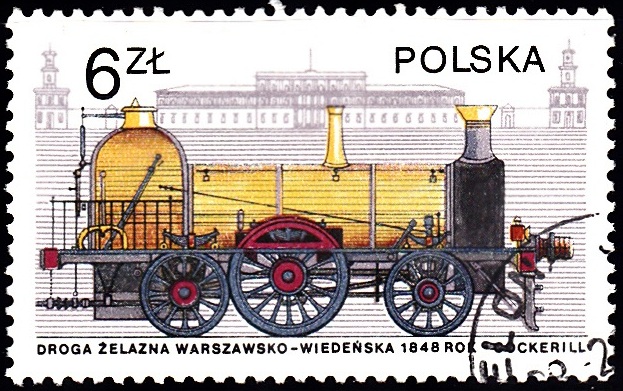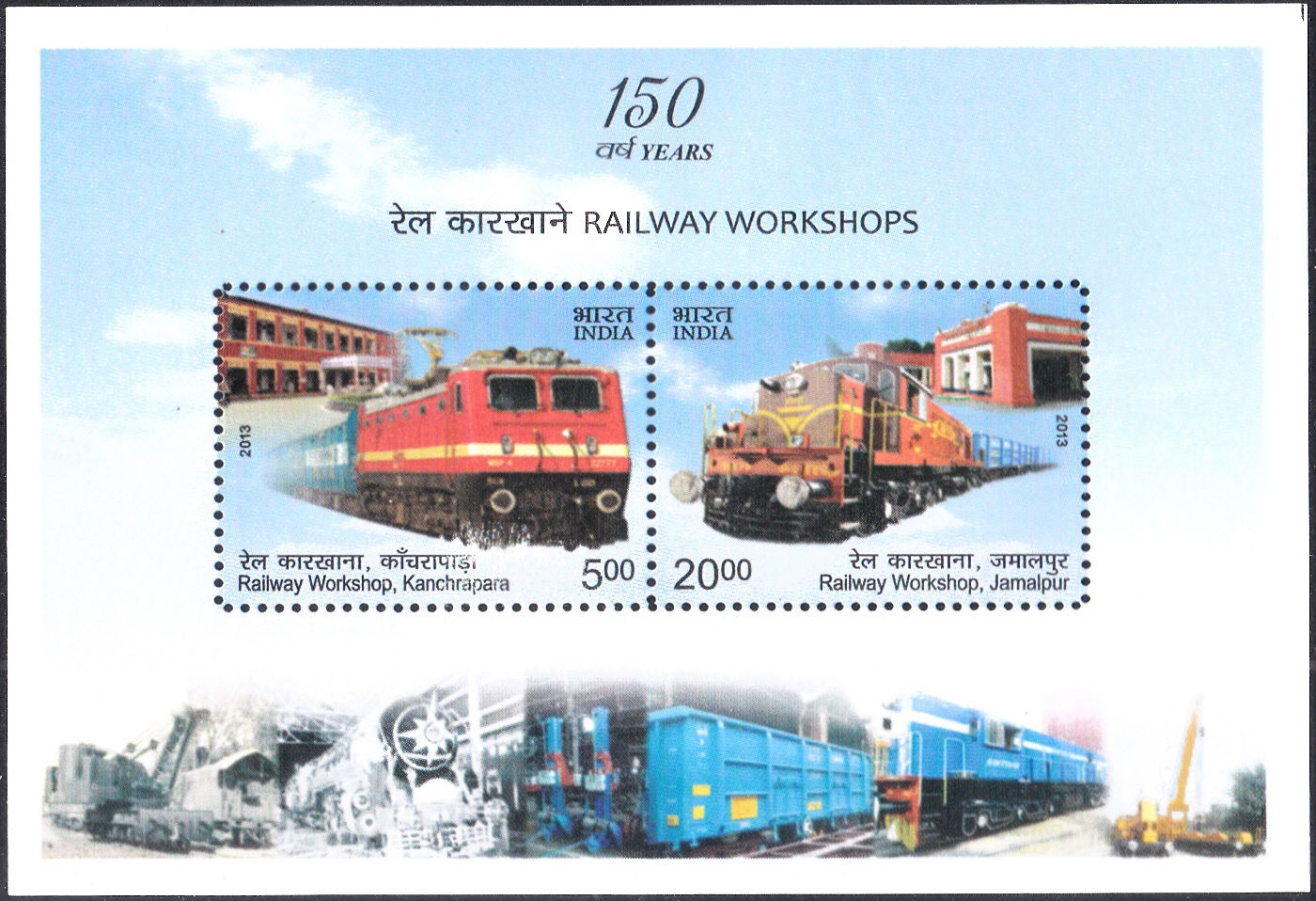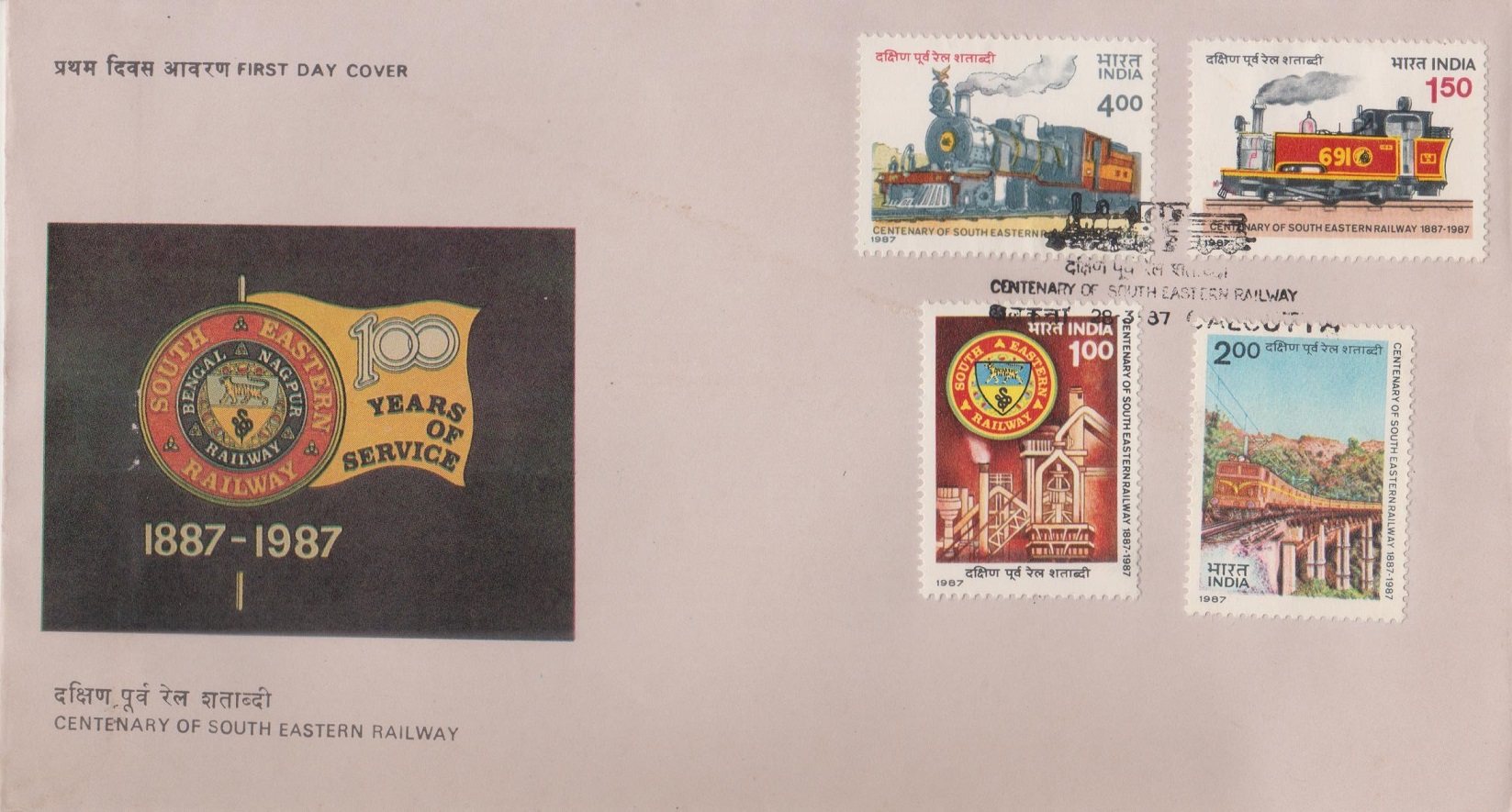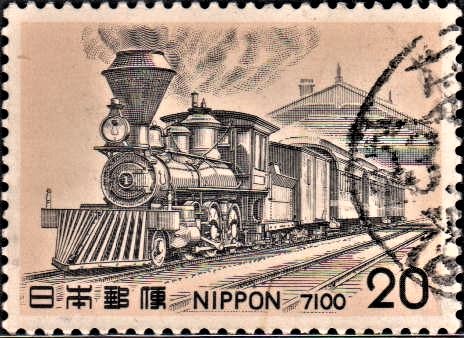
Indian Mountain Locomotives 1993
Complete set of 4 nos. of commemorative postage stamps on Mountain Locomotives :



 Issued by India
Issued by India
Issued on Apr 16, 1993
Design Credits :
Stamps : Pasricha
First Day Cover : Shankha Samantha
The Cancellation design prepared by Merv in Alexander, ADG (Phil) is based on Richard Trevithick‘s pioneer locomotive “Catch me who can”, which was run in a circular track laid in Euston Square London in the year 1808.
Type : Stamps, Postal Used
Colour : Multi Colour
Denomination : 100, 600, 800 & 1100 Paise
Overall size : 3.91 x 2.90 cms.
Printing size : 3.55 x 2.54 cms.
Perforation : 13 x 13
Paper : Imported un W/M gravure coated gummed stamp paper in sheets 50.8 x 53.5 cms.
Number Printed : 1.00 million Stamps
Printing Process : Photogravure
Printed : India Security Press
About :
- The steam locomotive was born of necessity. It was evolved at a time when new inventions were viewed with suspicion. Charles Dickens voiced the public attitude to early steam locos when he described the “inge in’ as a nasty, wheezin”, Creaking’, gaspin’, puffin’, bustin monster with a shiny green and gold back, like an unpleasant beetle.
- In India averse to the heat of the plains, the British sought cooler climes and the result was the developing of hill-stations. Transport was a constant problem. To mitigate these hardships train tracks were extended to Shimla, Darjeeling, Matheran and Ootacamund.
- Kalka–Shimla Rail Line :
The Kalka–Shimla section was opened for traffic in 1903. The Gauge of this track is 762 mm and the maximum gradient 1 in 25. This section has 102 tunnels on the 96 kms. run as it ascends from 643 m at Kalka to 2042 m at Shimla. The steam locomotives used were (2-6-2) tank type, built between 1904 and 1935 in Britain (class K-1, K-2, K-C with Walshaert valve gear) and Germany (class ZF, ZF-1 with Caprotti poppet valve.) - Matheran Railway Line :
The Matheran Railway begins its upward journey at Neral, a station 87 Kms. away from Bombay V.T. The line was constructed in 1907 and the gauge is 2 ft. The maximum gradient is 1 in 20 and the line rises 720 m in a distance of 19.36 Kms. The train was hauled earlier by 0-6-0 tank type locomotive built by Orenstein and Koppel of Berlin. - Nilgiri Hill Railway Line :
The train begins its upward journey from Mettupalyam and takes 4 hours to cover 52 kms. and reach Ooty. This line was constructed between 1885 and 1908 and has a maximum gradient of 1 in 23. The earlier steam locomotive had a rack and pinion system of holding them on steep gradients and came from Beyer Peacock Co. of Manchester in 1908 and later from North British Locomotives Co. of Glasgow. Later, Rack and Adhesion 0-8-2 (XI) and 0-8-2 (X) types of steam locomotives were supplied by Swiss Locomotive Works between 1940 and 1952. - Darjeeling Himalayan Railways :
It starts at Newjalpaiguri and reaches Darjeeling after covering a distance of 88 kms. Its gauge is 610 mm and maximum gradient is 1 in 25 with many loops as sharp as 18m radius. Thus it turns 540 degrees or 1½ completed turns at Batasia Loop. The maximum height achieved is 2258 m at Ghum. The steam locomotives are called ‘B’ class 0-4-0 saddle and well tank type, most of them came from Britain between 1889 and 1925, and this is the only mountain railway on Indian Railways where steam locomotives are still in use. - Text : Compiled by Mervin Alexander, Asst. Dir. General – Philately.







